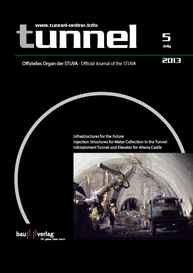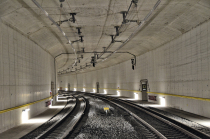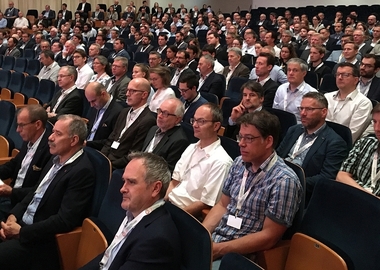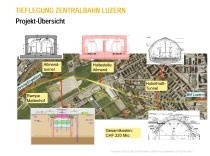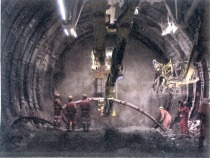Lucerne Underground Station: Construction Methods decided
Lucerne Station is numbered among Switzerland’s 5 largest with more than 60,000 passengers per day. This transport hub with 22 trains/hour and direction is already stretched to its limits. The Swiss Federal Railways (SBB) are calculating on the number of passengers increasing by 40 % during the next 20 years. The construction of an underground station was thus mooted. In 2009 a resolution led to the approval of 20 million CHF (15 million €) for a corresponding preliminary project.
The overall project foresees a deep-level station with 4 new tracks as well as two 420 m long and 12 m wide platforms some 14 m below tracks 8 to 14 of the current dead-end station with 4 escalators and stairwells. Above it, an additional level with shops will be built roughly at the height of the present basement. The new underground line runs from the Lucerne deep-level station between the Gütsch and Schönheim Tunnels to the existing Berne/West Switzerland and Basle/North Switzerland routes.
In addition, the Lucerne Underground Station will be designed in such a way that it can later be developed as a through station. Thanks to the production of the 3.5 km long, twin-track Dreilinden Tunnel, which passes beneath the lake, the deep-lying Lucerne Station will be linked with Ebikon and then with other rail routes in the north and west of Switzerland (Zurich/Zug and Schwyz/Tessino). The project will cost a total exceeding 1 billion CHF (some 800 million €).
The geotechnical investigations carried out within the scope of the preliminary project on the central ramp in the goods station involving an 18 m deep shaft to determine the groundwater storeys confirm the project’s feasibility. They also enabled the necessary construction methods and sequences for the preliminary project to be formulated. Prior to this, the lake basin’s ground conditions were established by means of pressure sounding and the lake’s right bank investigated using seismic examinations and exploratory drilling. The ground conditions in Ebikon were also clarified by excavators and dynamic probing. In this way, the construction methods for extending the underground station to a through station have largely been solved.
It was also proved that the underground station will be able to satisfy capacity for the growing demand and developing it as a through station brings the greatest benefit. The preliminary project for the Lucerne Underground Station will be tabled in mid-2013 to be followed by working out a detailed project.⇥G.B.

